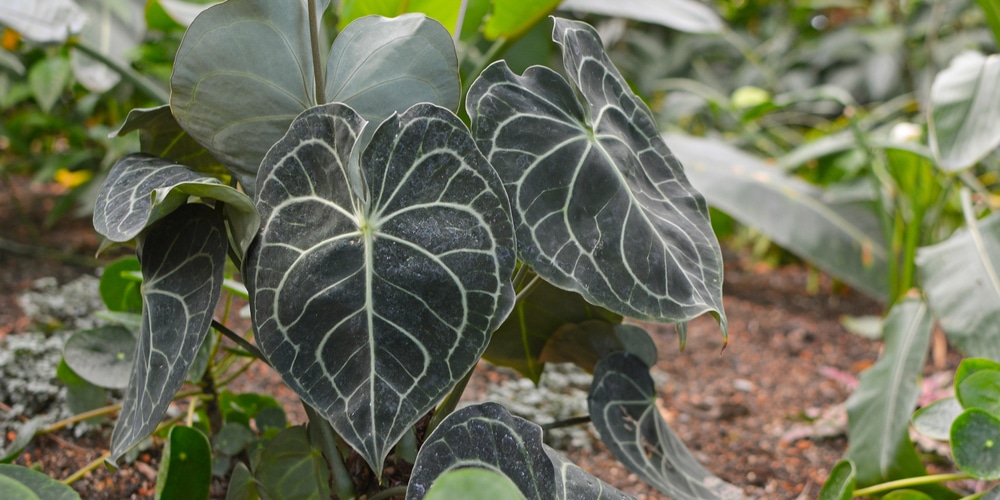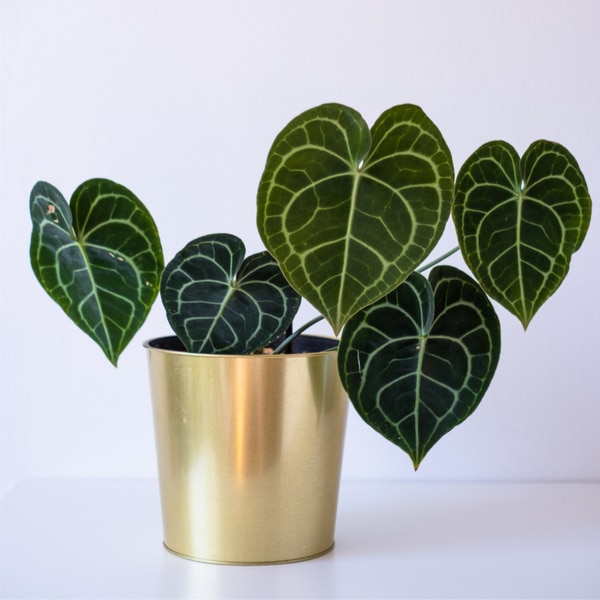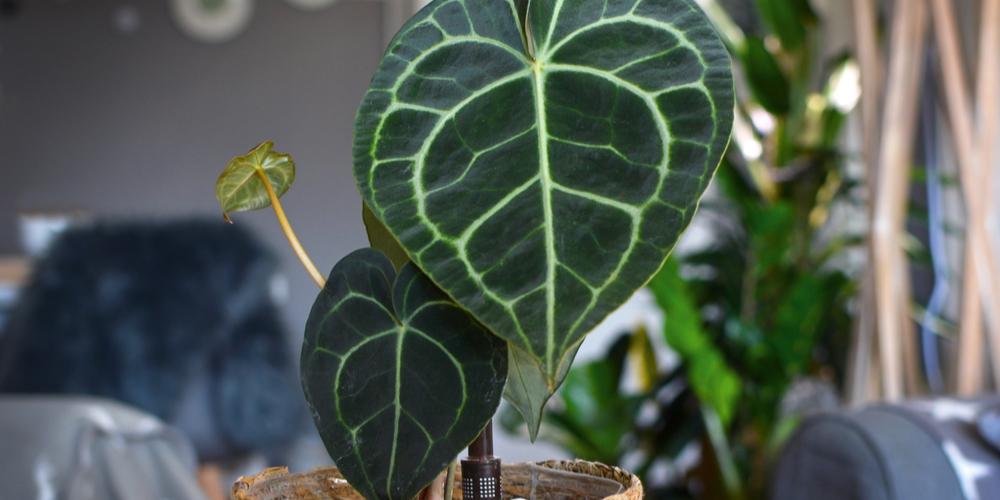The Anthurium Clarinervium is an attractive houseplant that originates from Mexico. These plants have lovely leaves which are thick and leathery. They are dark green in color and have white veins, which creates a lacy pattern. This tropical plant does have some specific care requirements, but it isn’t too temperamental as long as its basic needs are met.
Let’s look at how to grow and care for a thriving Anthurium Clarinervium.
What is an anthurium clarinervium plant?
The Anthurium Clarinervium is a tropical perennial that originates from the rocky landscapes of Mexico. In the natural world, these plants grow on shaded limestone outcrops. Many people mistakenly think of the plant as an epiphytic or air plant, but this species doesn’t attach itself to trees.
The Anthurium Clarinervium has become very popular due to its large, heart-shaped leaves, which have lovely looking veins and light green undersides. The leaves have a slightly fuzzy or velvety texture. These plants are relatively compact but can get quite tall if they are re-potted regularly. They can grow to be two feet tall.
How to care for an anthurium clarinervium
Anthurium Clarinervium is not the best plant for beginners as you do need to get their care right. They need to be planted in certain types of soil, should be watered regularly, and kept within a specific temperature range. Let’s look at some top care tips for the Anthurium Clarinervium:
Sunlight
Anthurium Clarinervium requires medium or bright indirect sunlight if they are to thrive. If these plants are left in direct sunlight, they may end up with burnt leaves, while in areas of shade, they will become leggy. This plant does well indoors on a bright windowsill.
Watering
When caring for Anthurium clarinervium, watering is essential. Ensure that you don’t leave your plant to dry out completely. However, don’t overwater as these plants don’t like wet soil, and waterlogging can cause their roots to rot.
In the wild, the Anthurium Clarinervium will grow in a rocky substrate that doesn’t retain water, so don’t overwater your plant. After watering, leave your plant to dry out for a few days before the next watering. How often you need to water your plant will depend on the climate where you live. Check that the top inch of soil is dry before rewatering.
Soil
Anthurium Clarinervium should be planted in soil that’s well-aerated so that the roots have access to oxygen. You can make up a loose potting mix by mixing perlite, gravel, and coconut choir in a standard houseplant soil. These plants grow best in soil that’s mildly acidic and has a pH range of between 5.5 and 6.5.
Humidity
Anthurium Clarinervium needs to live in a climate that has high humidity. The species will slowly die if it’s kept in low humidity. Aim to provide humidity that’s between 50% and 60%. The plant does like higher humidities of 70% or more, but you’re likely to end up with mold on your walls. If you have a small Anthurium Clarinervium plant, you can grow it in a terrarium as this will help to improve the humidity.
If you live in an area with lower humidity, you can mist your plant’s leaves, use a pebble tray, group your plants or use a humidifier. Ensure that your plant’s leaves don’t get too wet, or fungal infections could develop.
Temperature
These plants grow best when the temperature is warm. While this is easy if you keep your plant indoors, outdoor specimens may need to be moved inside in the fall. Anthurium Clarinervium prefer to live in temperatures of between 68ºF and 80ºF. They like to be warm during the day and don’t mind if it’s slightly cooler at night.
If you reside in USDA Zones 9 to 11, you’ll be able to keep your plant outside for much of the year. However, it will start to suffer if the temperature is below 55ºF.
Fertilizer
Anthurium Clarinervium can be fed with an NPK fertilizer with a ratio of 20-20-20 throughout the growing season. This type of fertilizer is suitable for many different species of houseplant. NPK fertilizers are available in either a chemical form or as an organic formula. It’s up to you as to which you choose. Organic fertilizers are healthier for the plants as they are less likely to suffer from root burn. They also help to feed the soil’s micro-bacterial ecosystem. You can give your plant fertilizer every month to six weeks from the spring to early fall. Always read the manufacturer’s instructions when feeding plants and ensure that you mix the fertilizer to the correct ratio.
Toxicity
Unfortunately, the Anthurium Clarinervium is toxic if ingested. This is the plant’s way of protecting itself in the wild as the plant can deter animals. These plants are dangerous to pets, including dogs, cats, and smaller pets. They are also mildly poisonous if consumed by humans and can cause vomiting and mouth and throat irritation. If you’re growing an Anthurium Clarinervium and have pets or young children, ensure that the plant is kept out of their reach.
Pests And Diseases Affecting the Anthurium Clarinervium
Anthurium Clarinervium is pretty resistant when it comes to disease and insect infestations. Although these plants like humidity, they are affected by high levels of moisture in the environment. Fungal infections can affect the leaves and roots if the plants get too wet. Ensure water isn’t left to linger on the plant’s leaves.
If you notice any pests such as spider mites or scale on your plant, you can use insecticidal soap to get rid of them. Ensure that you spray both sides of the leaves when treating your plant. Rinse your plants off and wipe their leaves twenty minutes after treatment.
Conclusion
Anthurium Clarinervium is a lovely tropical plant that can be grown inside and out. Ensure that you don’t let your plant get cold; bring it inside a greenhouse or your home in the fall. Most people keep Anthurium Clarinervium’s as a houseplant as they have lovely decorative leaves that look like lace. Anthurium Clarinevium is closely related to Anthurium Gloriosum and Anthurium Warocque. They look very similar and need similar levels of care.
People often mistake Anthurium Clarinerrvium with Anthurium crystallinum so we came up with this handy Anthurium crystallinum and Clarinervium guide


